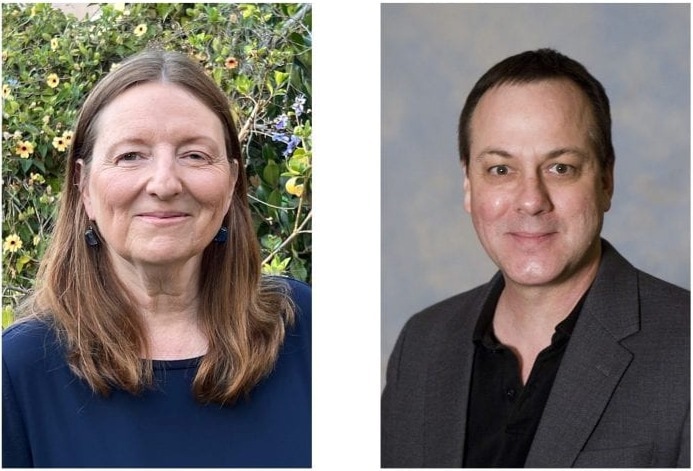A discovery regarding how a particular protein is triggered in tumor cells, conducted by researchers at the University of California, Irvine, may lead to more effective therapies for some of the deadliest types of cancer.
 A. Jane Bardwell, project scientist in the Department of Developmental and Cell Biology, and Lee Bardwell, UCI professor of developmental and cell biology, have identified a protein that’s activated in tumor cells, a discovery that may lead to new therapies for a variety of cancers. Image Credit: University of California–Irvine.
A. Jane Bardwell, project scientist in the Department of Developmental and Cell Biology, and Lee Bardwell, UCI professor of developmental and cell biology, have identified a protein that’s activated in tumor cells, a discovery that may lead to new therapies for a variety of cancers. Image Credit: University of California–Irvine.
The discovery, led by scientists at the School of Biological Sciences, may potentially result in treatment options for skin cancer in adults and children, the most prevalent form of juvenile brain cancer, and the particularly hazardous melanoma and pancreatic adenocarcinoma. The research is detailed in a publication by Life Science Alliance.
The GLI1 protein, which is crucial for cell formation but has also been linked to a number of malignancies, was the subject of the finding. HH, or the Hedgehog signaling pathway, often activates GLI1. The contact or crosstalk between HH as well as the mitogen-activated protein kinase pathway, on the other hand, is something that scientists have been aware of for approximately ten years.
In some cases, proteins in one pathway can turn on proteins in another. It’s a complex system. We wanted to understand the molecular mechanism that leads to GLI1 being activated by proteins in the MAPK pathway.”
Jane Bardwell, Study Lead Author and Project Scientist, Department of Developmental and Cell Biology, University of California–Irvine
Normally, GLI1 forms a strong bond with a protein known as SUFU. GLI1 is suppressed by that protein, preventing it from entering cell nuclei and activating genes. The GLI1 protein has seven potential phosphorylation or phosphate group transfer sites that the researchers looked at.
We identified three that can be phosphorylated and are involved in weakening the binding between GLI1 and SUFU. This process activates GLI1, enabling it to enter the nucleus of cells, where it can cause uncontrolled growth resulting in cancer.”
Lee Bardwell, Professor, Department of Developmental and Cell Biology, University of California–Irvine
Bardwell observed that phosphorylation of all three sites results in much more GLI1 escape from SUFU than phosphorylation of just one or even two of the sites.
The finding represents a substantial advance toward more precise and effective cancer therapies.
If we can understand exactly what is going on in a certain cancer or particular tumor, it could be possible to develop a drug specific to a specific tumor or individual patient. It would allow us to treat these diseases without the toxicity of basic chemotherapy.”
Lee Bardwell, Professor, Department of Developmental and Cell Biology, University of California–Irvine
Additionally, different mutations exist in various tumors from the same malignancy in different people. In the future, it could be possible to screen tumors and choose the best course of action for each.
Source:
Journal reference:
Bardwell, A. J., et al. (2022) ERK2 MAP kinase regulates SUFU binding by multisite phosphorylation of GLI1. Life Science Alliance. doi.org/10.26508/lsa.202101353.